
Architect Friedrich Weinwurm: New Path - Exhibition at SNG
Source
Slovenská národná galéria
Slovenská národná galéria
Publisher
Tisková zpráva
27.01.2018 09:00
Tisková zpráva
27.01.2018 09:00
Slovakia
Bratislava
Fridrich Weinwurm
Slovak National Gallery, Esterházy Palace, 2nd floor
Ľudovít Štúr Square 4, Bratislava
Duration of the exhibition: January 26 - May 20, 2018
Curator: Henrieta Moravčíková
Expert collaboration: Denis Haberland (SNG)
Exhibition architecture: Peter Moravčík
Graphic design: Ľubica Segečová
Author of photographs: Olja Triaška Stefanović
The exhibition commemorates the work of Friedrich Weinwurm (1885 – 1942), the most significant representative of the architectural avant-garde in Slovakia. Through documentation of realized architectural works, it thematically underscores the architect's vision of new objectivity in architecture as "a time-appropriate building art". It displays the work of an architectural studio from the first half of the 20th century, design methods, and representation practices. Current photographs of architectural works allow one to feel the atmosphere of new objectivity, tested over decades. The exhibition includes an audio reproduction of original texts by the architect, illuminating various aspects of Weinwurm's reflections on architecture.
The exhibition and accompanying catalog were curated by Henrieta Moravčíková (author of a lavishly illustrated and acclaimed monograph on the architect), exhibition architecture was designed by Peter Moravčík, photographs are by Olja Triaška Stefanović, axonometric sketches of realized buildings and their structural and spatial systems were created by Laura Pastoreková, polystyrene models of buildings were made by Danica Ščepková, cardboard models were made by students of the Faculty of Architecture of STU, graphic editing of the catalog was done by Ľubica Segečová, original Weinwurm texts were narrated by Michal Hvorecký, and curatorial collaboration from SNG was taken over by Denis Haberland. The original project documentation on display was loaned by the Archive of the City of Bratislava, the NBS Archive, the State Archive in Žilina located in Bytča, and the State Archive in Nitra located in Ivanka pri Nitre. Period publications come from the SNG collection, the University Library in Bratislava, and private archives.
Friedrich Weinwurm was born in 1885 in Borský Mikuláš to a Jewish family. He graduated from high school at a grammar school in Bratislava. He studied architecture at TU Berlin and in Dresden. He arrived in Bratislava in 1915 during the waning days of late Art Nouveau and decorative eclectic historicism. Thanks to his education and experience, he quickly became a leading figure in the local architectural scene. In just over 25 years of his life, together with Ignác Vécsei (from 1924 in a joint studio), he realized dozens of significant buildings in Bratislava alone, which greatly contributed to the modern image of the city and its emerging "urban" identity as the new Slovak metropolis. In addition to Bratislava, he primarily worked in Žilina, but also in other locations in Slovakia. His work remained unfinished; due to his origins, he was persecuted by the regime of the Slovak State. He was imprisoned and likely disappeared without a trace during an attempted escape across the state border.
Friedrich Weinwurm focused on two key areas of creation. One was the internal architectural realm, which concerned particularly architectural form, operational and spatial relationships, but also the constructive and technical aspects of architecture. The other area was the social role of architecture, which lay in addressing housing issues and related topics such as the status of the individual, women, and families in modern society, collectivism, planning, industrialization, and standardization. The topics encompassed in this area were most intensely addressed by Weinwurm in connection with the design of residential complexes Unitas and Nová doba.
The architect was able to support his rich practical experience with his own theoretical arguments for a new architecture. He championed the idea of building art liberated from decoration already in his earliest texts. Rationalization of operation and corresponding layout arrangement, as well as unembellished, purpose-reflecting forms became integral parts of Weinwurm's understanding of architecture in the subsequent period. His works were characterized by standardized floor plan solutions, simple facades reduced to a system of window openings irregularly placed in smooth plaster surfaces, as well as an absence of those formal elements which were later considered characteristics of the new functionalist style. Although Weinwurm declared a straightforward relationship between internal operation and external form in his texts, he never resigned from the artistic aspect of creation, thus distancing himself not only from historical styles but also from the formalism of modern architecture. His working method could be called reduction. He simplified architectural expression to basic elements, a smooth wall and a simple window opening. He also applied the method of reduction in the area of color and in the choice of materials.
To clarify his thinking about architecture and his design method, we have included for the first time the Slovak transcription of his original articles "The Time-Appropriate Building Art" (1924) and "Today's Creation" (1931) in the exhibition catalog. He characterized his work as "an effort to create a house with the simplest, clearest floor plan..., an effort to create a facade from the inside, as a result of genuine open views and feelings...". A programmatic declaration of his work is the text "Where Does the New Path Lead?" (1931), in which he no longer dealt with formal, constructive, or spatial aspects of architecture, but almost exclusively with the social context of architecture. Weinwurm's theoretical works, as well as the perspectives of his contemporaries and later theorists on his innovative building art, are presented at the exhibition through selected period publications.
The exhibition will visually convey to the viewer the ideological and expressive concept of Weinwurm's work and present his complex thinking about architecture. It celebrates the work of a man and pays tribute to an architect who until now was known and highly valued primarily in professional circles. It promotes building art that, at the time of its origin and application in Slovakia, was among the peak manifestations of world architectural trends. Through the analysis of the most complex buildings from the architect's work, it aims to clarify the revolutionary contribution of his work in the context of interwar Czechoslovakia. The modernity of Friedrich Weinwurm's architecture, rooted in the rationalization of operation and the aesthetics of unembellished truthful expression, represented a civilizational leap in provincial conservative Bratislava, significantly opening the way to the acceptance and application of modern architecture in Slovakia.
We understand the exhibition as an impulse for a new acceptance and for a socially necessary reflection on the values of interwar modernity and as a stimulus for its more thorough protection. At the exhibition, we also present a patented steel window by the Kraus company, in which the architect himself participated, and which was salvaged during the demolition of part of the Bezručova 3 building, a significant functionalist monument of Bratislava (A. Balán, J. Grossmann, 1932 – 1936). The organizers of the exhibition do not perceive Weinwurm's work as a museum exhibit or an occasionally dusted gallery artifact or ante mortem memorial, but as a still relevant living artistic statement, a time-tested concept, and an aesthetically still suitable form of “a roof over one’s head.”
Accompanying program of the exhibition:
Sunday, February 4 | 4.00 p.m.
Sunday Rest: Architect Friedrich Weinwurm: The New Path
Friedrich Weinwurm (1885 – 1942) was the most significant representative of the architectural avant-garde in Slovakia. In his perceptions of architecture, he gradually came to recognize the importance of its social role. The lecture will clarify how he incorporated modern principles of standardization, collectivism, and planning into his work.
Esterházy Palace, 2nd floor, Námestie Ľ. Štúra 4, Bratislava
Free admission
Nedeľa, 11. 2. | 15.00
Siesta v galérii: Architekt Friedrich Weinwurm: Nová cesta
The Sunday commentary will guide through the exhibition of Friedrich Weinwurm, the most significant representative of the architectural avant-garde in Slovakia, and will present his work and reflections on the role of architecture.
Esterházy Palace, 2nd floor, Námestie Ľ. Štúra 4, Bratislava
Free admission
Thursday, February 15 | 6.00 p.m.
Curatorial commentary: Architect Friedrich Weinwurm
The introductory curatorial commentary by Henrieta Moravčíková at the exhibition "Architect Friedrich Weinwurm: The New Path" will present the work of the most significant representative of the architectural avant-garde in Slovakia.
Esterházy Palace, 2nd floor, Nám. Ľ. Štúra 4, Bratislava Admission: €4 / €2
Information about other programs will be published in program bulletins and on www.sng.sk
Ľudovít Štúr Square 4, Bratislava
Duration of the exhibition: January 26 - May 20, 2018
Curator: Henrieta Moravčíková
Expert collaboration: Denis Haberland (SNG)
Exhibition architecture: Peter Moravčík
Graphic design: Ľubica Segečová
Author of photographs: Olja Triaška Stefanović
The exhibition commemorates the work of Friedrich Weinwurm (1885 – 1942), the most significant representative of the architectural avant-garde in Slovakia. Through documentation of realized architectural works, it thematically underscores the architect's vision of new objectivity in architecture as "a time-appropriate building art". It displays the work of an architectural studio from the first half of the 20th century, design methods, and representation practices. Current photographs of architectural works allow one to feel the atmosphere of new objectivity, tested over decades. The exhibition includes an audio reproduction of original texts by the architect, illuminating various aspects of Weinwurm's reflections on architecture.
The exhibition and accompanying catalog were curated by Henrieta Moravčíková (author of a lavishly illustrated and acclaimed monograph on the architect), exhibition architecture was designed by Peter Moravčík, photographs are by Olja Triaška Stefanović, axonometric sketches of realized buildings and their structural and spatial systems were created by Laura Pastoreková, polystyrene models of buildings were made by Danica Ščepková, cardboard models were made by students of the Faculty of Architecture of STU, graphic editing of the catalog was done by Ľubica Segečová, original Weinwurm texts were narrated by Michal Hvorecký, and curatorial collaboration from SNG was taken over by Denis Haberland. The original project documentation on display was loaned by the Archive of the City of Bratislava, the NBS Archive, the State Archive in Žilina located in Bytča, and the State Archive in Nitra located in Ivanka pri Nitre. Period publications come from the SNG collection, the University Library in Bratislava, and private archives.
Friedrich Weinwurm was born in 1885 in Borský Mikuláš to a Jewish family. He graduated from high school at a grammar school in Bratislava. He studied architecture at TU Berlin and in Dresden. He arrived in Bratislava in 1915 during the waning days of late Art Nouveau and decorative eclectic historicism. Thanks to his education and experience, he quickly became a leading figure in the local architectural scene. In just over 25 years of his life, together with Ignác Vécsei (from 1924 in a joint studio), he realized dozens of significant buildings in Bratislava alone, which greatly contributed to the modern image of the city and its emerging "urban" identity as the new Slovak metropolis. In addition to Bratislava, he primarily worked in Žilina, but also in other locations in Slovakia. His work remained unfinished; due to his origins, he was persecuted by the regime of the Slovak State. He was imprisoned and likely disappeared without a trace during an attempted escape across the state border.
Friedrich Weinwurm focused on two key areas of creation. One was the internal architectural realm, which concerned particularly architectural form, operational and spatial relationships, but also the constructive and technical aspects of architecture. The other area was the social role of architecture, which lay in addressing housing issues and related topics such as the status of the individual, women, and families in modern society, collectivism, planning, industrialization, and standardization. The topics encompassed in this area were most intensely addressed by Weinwurm in connection with the design of residential complexes Unitas and Nová doba.
The architect was able to support his rich practical experience with his own theoretical arguments for a new architecture. He championed the idea of building art liberated from decoration already in his earliest texts. Rationalization of operation and corresponding layout arrangement, as well as unembellished, purpose-reflecting forms became integral parts of Weinwurm's understanding of architecture in the subsequent period. His works were characterized by standardized floor plan solutions, simple facades reduced to a system of window openings irregularly placed in smooth plaster surfaces, as well as an absence of those formal elements which were later considered characteristics of the new functionalist style. Although Weinwurm declared a straightforward relationship between internal operation and external form in his texts, he never resigned from the artistic aspect of creation, thus distancing himself not only from historical styles but also from the formalism of modern architecture. His working method could be called reduction. He simplified architectural expression to basic elements, a smooth wall and a simple window opening. He also applied the method of reduction in the area of color and in the choice of materials.
To clarify his thinking about architecture and his design method, we have included for the first time the Slovak transcription of his original articles "The Time-Appropriate Building Art" (1924) and "Today's Creation" (1931) in the exhibition catalog. He characterized his work as "an effort to create a house with the simplest, clearest floor plan..., an effort to create a facade from the inside, as a result of genuine open views and feelings...". A programmatic declaration of his work is the text "Where Does the New Path Lead?" (1931), in which he no longer dealt with formal, constructive, or spatial aspects of architecture, but almost exclusively with the social context of architecture. Weinwurm's theoretical works, as well as the perspectives of his contemporaries and later theorists on his innovative building art, are presented at the exhibition through selected period publications.
The exhibition will visually convey to the viewer the ideological and expressive concept of Weinwurm's work and present his complex thinking about architecture. It celebrates the work of a man and pays tribute to an architect who until now was known and highly valued primarily in professional circles. It promotes building art that, at the time of its origin and application in Slovakia, was among the peak manifestations of world architectural trends. Through the analysis of the most complex buildings from the architect's work, it aims to clarify the revolutionary contribution of his work in the context of interwar Czechoslovakia. The modernity of Friedrich Weinwurm's architecture, rooted in the rationalization of operation and the aesthetics of unembellished truthful expression, represented a civilizational leap in provincial conservative Bratislava, significantly opening the way to the acceptance and application of modern architecture in Slovakia.
We understand the exhibition as an impulse for a new acceptance and for a socially necessary reflection on the values of interwar modernity and as a stimulus for its more thorough protection. At the exhibition, we also present a patented steel window by the Kraus company, in which the architect himself participated, and which was salvaged during the demolition of part of the Bezručova 3 building, a significant functionalist monument of Bratislava (A. Balán, J. Grossmann, 1932 – 1936). The organizers of the exhibition do not perceive Weinwurm's work as a museum exhibit or an occasionally dusted gallery artifact or ante mortem memorial, but as a still relevant living artistic statement, a time-tested concept, and an aesthetically still suitable form of “a roof over one’s head.”
Henrieta Moravčíková & Denis Haberland
Sunday, February 4 | 4.00 p.m.
Sunday Rest: Architect Friedrich Weinwurm: The New Path
Friedrich Weinwurm (1885 – 1942) was the most significant representative of the architectural avant-garde in Slovakia. In his perceptions of architecture, he gradually came to recognize the importance of its social role. The lecture will clarify how he incorporated modern principles of standardization, collectivism, and planning into his work.
Esterházy Palace, 2nd floor, Námestie Ľ. Štúra 4, Bratislava
Free admission
Nedeľa, 11. 2. | 15.00
Siesta v galérii: Architekt Friedrich Weinwurm: Nová cesta
The Sunday commentary will guide through the exhibition of Friedrich Weinwurm, the most significant representative of the architectural avant-garde in Slovakia, and will present his work and reflections on the role of architecture.
Esterházy Palace, 2nd floor, Námestie Ľ. Štúra 4, Bratislava
Free admission
Thursday, February 15 | 6.00 p.m.
Curatorial commentary: Architect Friedrich Weinwurm
The introductory curatorial commentary by Henrieta Moravčíková at the exhibition "Architect Friedrich Weinwurm: The New Path" will present the work of the most significant representative of the architectural avant-garde in Slovakia.
Esterházy Palace, 2nd floor, Nám. Ľ. Štúra 4, Bratislava Admission: €4 / €2
Information about other programs will be published in program bulletins and on www.sng.sk
The English translation is powered by AI tool. Switch to Czech to view the original text source.
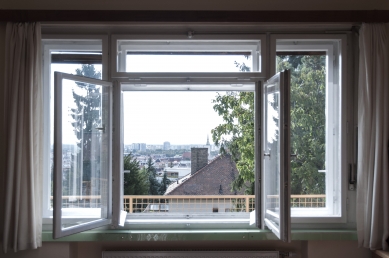
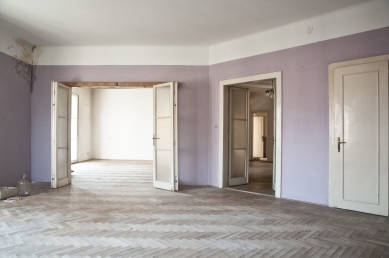
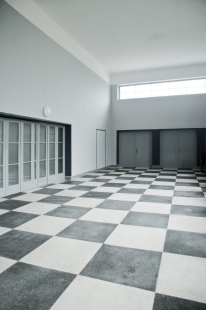
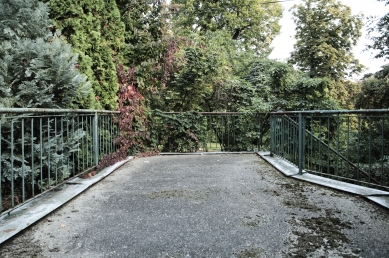
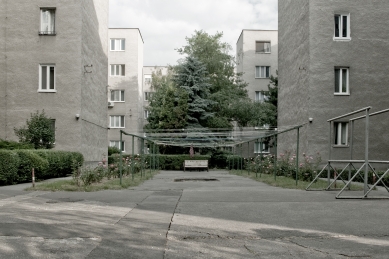
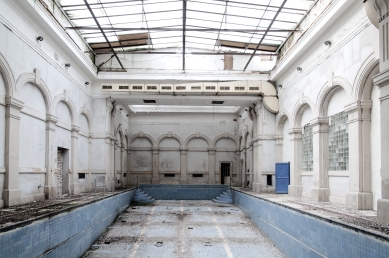
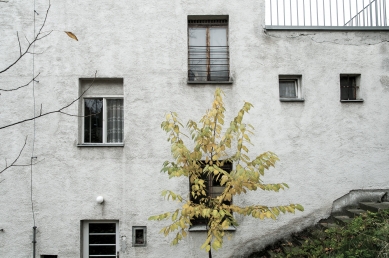
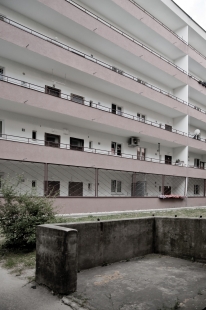
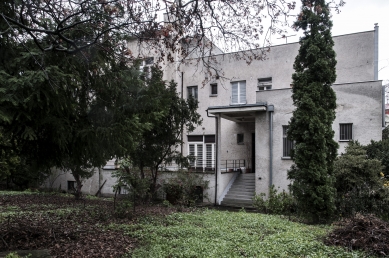
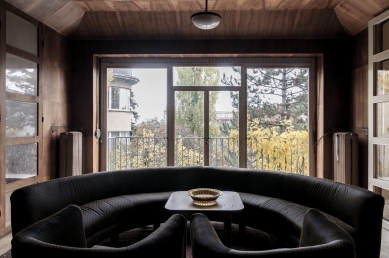
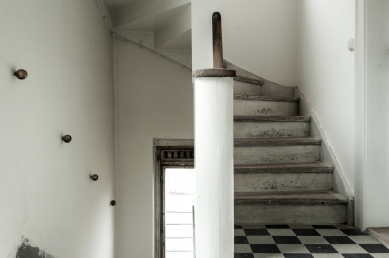
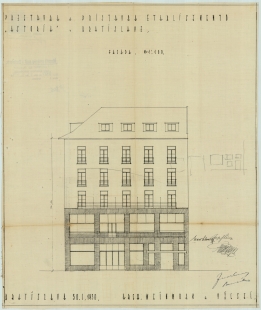




0 comments
add comment
Related articles
1
28.08.2019 | In Brno, they present the architect who gave Bratislava a modern face
0
17.05.2018 | Architect Friedrich Weinwurm: New Path - Final Program
0
12.12.2014 | Printed Architecture: Henrieta Moravčíková
0
24.05.2014 | Henrieta Moravčíková : Fridrich Weinwurm and his contribution to engaged thinking about architecture











